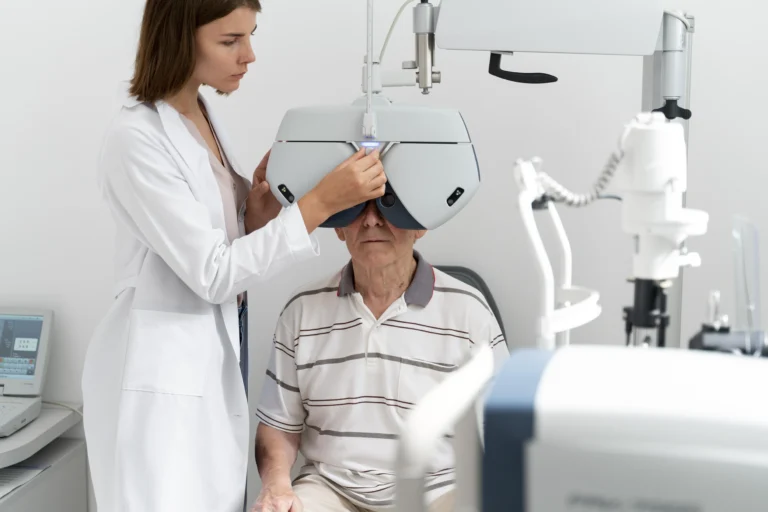Droopy eyelids, medically termed ptosis, can also affect your vision and overall eye health. Ptosis is said to occur when the upper eyelid droops over the eye, sometimes to the point of impairing sight. This condition can be subtle or severe, impacting both appearance and daily functioning. Addressing ptosis is essential for aesthetic reasons and preventing potential vision problems. While ptosis surgery is a common solution, knowing the causes and other treatment options is crucial.
What is Ptosis?
Ptosis is a common medical condition characterized by the drooping of the upper eyelid. It can affect one or both eyes and may be present at birth (congenital ptosis) or develop later in life (acquired ptosis). The severity of ptosis varies, ranging from a barely noticeable droop to a lid that covers the pupil entirely, leading to vision impairment.
Causes of Ptosis
- Aging
As a person ages, the muscles responsible for lifting the eyelids weaken, leading to drooping and require ptosis repair for clear vision.
- Congenital Factors
Some people are born with ptosis due to underdeveloped or weakened eyelid muscles.
- Neurological Conditions
Disorders affecting the nerves that control the eyelid muscles, such as third cranial nerve palsy or myasthenia gravis, can result in ptosis, which can be fixed with ptosis correction surgery.
- Tumors or Injury
An injury to the eye or growth of tumors around the eye can impede movement and damage the muscles or nerves responsible for eyelid elevation, leading to ptosis.
Ptosis Correction – Different Treatment Options
Surgical Options
- Levator Muscle Resection
Levator muscle resection is the most common ptosis correction surgery. It involves shortening the levator muscle, which is responsible for lifting the eyelid, to elevate the drooping lid.
- Frontalis Sling Operation
Frontalis sling operation is typically used in severe cases of congenital ptosis, where the levator muscle is too weak. This ptosis surgery involves connecting the eyelid to the frontalis muscle in the forehead, allowing the patient to lift the eyelid using their forehead muscles.
- Müller Muscle-Conjunctival Resection (MMCR)
MMCR shortens the Müller muscle to elevate the eyelid and is suitable for mild to moderate ptosis repair. This is a less invasive procedure and has a faster recovery time compared to other forms of ptosis correction surgery.
Non-Surgical Options
For patients who are not candidates for eyelid ptosis surgery, non-surgical options are available, though they may not be as effective in severe cases:
- Eyelid crutches are small devices that can be attached to glasses to physically hold up the drooping eyelid. While not a permanent solution, this provides temporary relief in vision.
- In some cases, Botox injections can help improve the eyelid by weakening the opposing muscles that pull the lid down. However, this effect is temporary and may require regular treatments.
Ptosis Management
- Eyelid Exercises
Although not a cure, the best eyelid exercises can strengthen the muscles around the eyes. Simple exercises like repeatedly raising and lowering the eyelids can help improve muscle tone.
Proper Eye Care
Regular eye health checkups are essential for the early detection and management of ptosis. Proper hygiene, avoiding eye strain, and wearing protective eyewear can also help maintain good eye health.
Ptosis is a condition that should not be ignored, especially when it begins to affect vision. Understanding the causes and available treatment options, including ptosis surgery and ptosis correction techniques, is vital for making informed decisions about eye health. Trained ophthalmologists at Shri Venkatesh Eye Institute will help you guide various options suitable for treating ptosis based on a comprehensive evaluation. Get treated with advanced technology under an expert for clearer vision with ptosis correction surgery.

